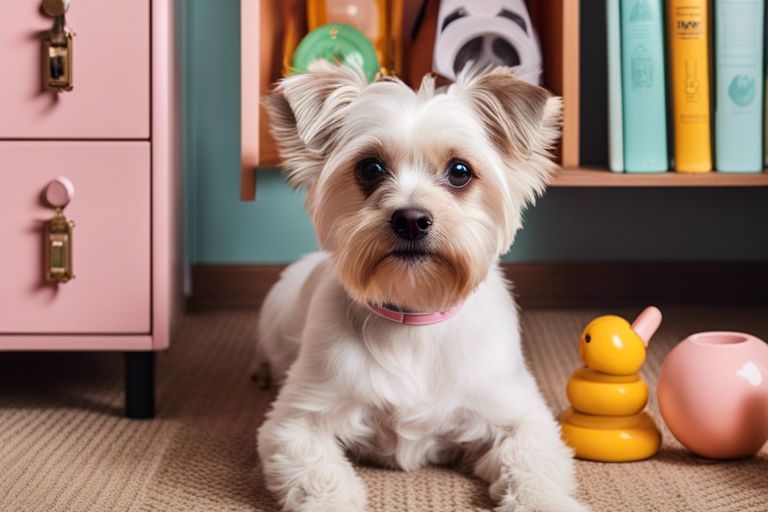If you have a small dog who dreads bath time, you are not alone. Many pet owners struggle with finding effective methods to make the experience more enjoyable for their furry friends. Through my years of experience as a professional dog trainer, I have discovered tried and true techniques for teaching small dogs to actually look forward to bath time. In this blog post, I will share with you some of the best methods that I have found to be effective in making bath time a positive experience for small dogs. Whether your pup is fearful, anxious, or simply dislikes getting wet, I am confident that you will find these techniques to be helpful in transforming bath time into a pleasant activity for your small dog.
Key Takeaways:
- Positive reinforcement: Use treats, toys, and verbal praise to create a positive association with bath time for your small dog.
- Gradual desensitization: Introduce your dog to the bath slowly, starting with just the tub and gradually adding water and soap as they become more comfortable.
- Consistency: Make bath time a regular part of your dog’s routine to help them become more comfortable with the process over time.
Preparing for a Positive Bath Time Experience
Now, before we even think about getting your small dog into the bath, it’s important to prepare for a positive bathing experience. For some great tips on training your dog to love bath time, check out Training Your Dog to Love the Bath on Woof Report. This will help set the stage for a successful bath time routine. Let’s dive in and discuss how to create a comfortable environment and gather the necessary supplies for bath time.
Creating a Comfortable Environment
When it comes to bath time, comfort is key. Choose a warm, well-lit area for your dog’s bath, and make sure it’s a place where your dog feels safe and secure. If your small dog is anxious about bath time, consider playing some calming music or using a pheromone diffuser near the bathing area to help relax them. Making the environment as comfortable as possible will help your dog learn to enjoy bath time.
Gathering Necessary Supplies
Having the right supplies on hand is crucial for a successful bath time experience. Make sure you have mild, dog-friendly shampoo that won’t irritate your dog’s skin, along with plenty of soft, absorbent towels for drying. It’s also helpful to have brushes or combs on hand to work out any tangles or mats in your dog’s fur before bathing. By having everything you need at the ready, you can ensure a smooth and efficient bath time for your small dog.

Training Techniques for Enjoyable Baths
Assuming your small dog has a negative association with bath time, it’s important to introduce them to the process gradually and with patience. Teaching a small dog to enjoy bath time requires consistency, positive reinforcement, and a calm approach. Here are some training techniques that can help your small dog learn to love bath time.
Gradual Exposure
I cannot stress enough how important it is to introduce your small dog to bath time gradually. This means starting with activities that are associated with positive experiences, such as playing with their favorite toys in the bathroom or allowing them to explore the bathtub on their own terms. Gradually introduce them to the sound of running water and the feeling of being sprayed with a gentle stream of water. It’s important not to rush this process, as forcing your dog into the bath can lead to fear and anxiety.
Positive Reinforcement
Positive reinforcement is key to helping your small dog enjoy bath time. Use treats, praise, and affection to reward your dog for being calm and cooperative during bath time. Make sure to offer plenty of rewards and praise throughout the process, rather than only after the bath is over. This will help your dog associate bath time with positive experiences and make them more likely to be cooperative in the future.
Calm and Gentle Approach
Approach bath time with a calm and gentle demeanor. Your small dog will pick up on your energy, so if you’re feeling anxious or stressed, they will too. Speak to your dog in a soothing voice, pet them gently, and maintain a relaxed attitude throughout the entire process. This will help create a calm and positive environment for your dog, making them more likely to enjoy bath time.
By using these training techniques, you can help your small dog learn to enjoy bath time and make the experience a positive one for both of you.
FAQ
Q: How can I teach my small dog to enjoy bath time?
A: The best method for teaching a small dog to enjoy bath time is to gradually introduce them to the experience in a positive and calm manner. Start by getting your dog comfortable with being in the bath or sink without any water. Offer treats and praise to create a positive association. Once they are comfortable with the bathing area, slowly introduce water by using a cup to pour small amounts over their body while continuing to offer treats and praise. Be patient and consistent, and avoid forcing them into the water if they are not ready.
Q: What grooming products should I use to make bath time enjoyable for my small dog?
A: When teaching a small dog to enjoy bath time, it is important to use gentle and appropriate grooming products. Look for a mild dog shampoo specifically designed for small breeds. Avoid using human shampoos, as they can be too harsh for a dog’s skin. Additionally, using a gentle brush during bath time can help your dog feel more comfortable and relaxed. Always read and follow the instructions on grooming products to ensure they are being used safely and effectively.
Q: Are there any training techniques that can help my small dog enjoy bath time?
A: Positive reinforcement training techniques can be helpful in teaching a small dog to enjoy bath time. This can include using treats, praise, and rewards to create a positive association with the bathing experience. Additionally, incorporating regular grooming and handling into your dog’s routine can help them become more comfortable with being bathed. It’s important to be patient and understanding, and to never use force or punishment during bath time as this can create a negative association and make the process more difficult in the future.


